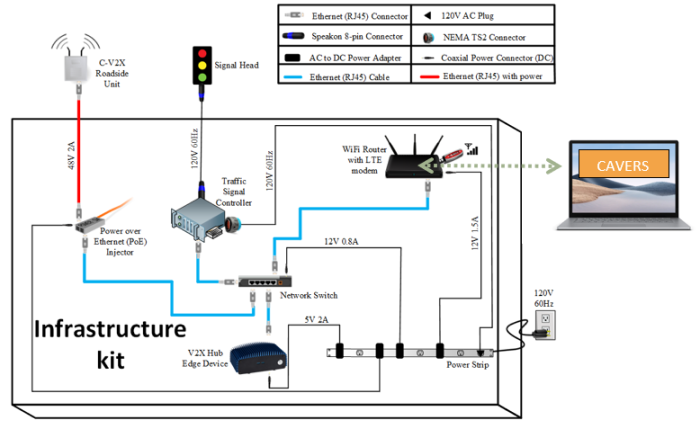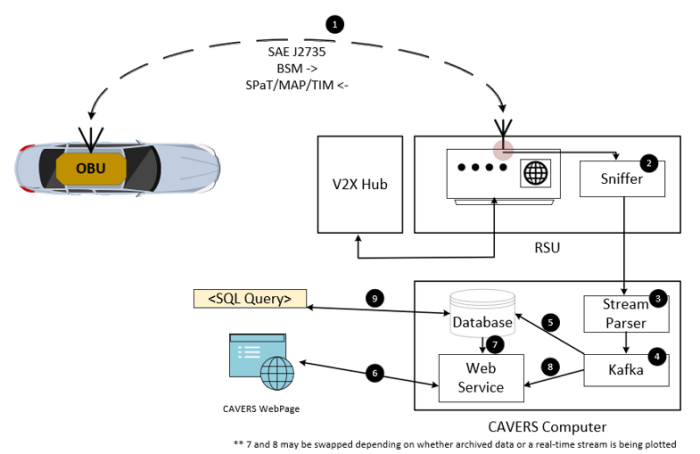← Table of Contents
APPENDIX B. CAVE-IN-A-BOX WITH C-V2X RADIO AND CAVERS INTEGRATION
This appendix highlights integration plans and specifics in developing a CAVe-in-a-box with C-V2X wireless standard. CAVe-in-a-box was initially designed with DSRC wireless systems, however with changing requirements where C-V2X is being considered, this appendix is added to help with the transition.
SYSTEM DESIGN
As seen in Figure 32, one of the two changes that occurs is the swapping of the existing DSRC RSU with a C-V2X RSU. Once the RSUs are swapped, the previous RSU IP address must be assigned to the replacement. With this configuration, the system functions as it did previously, but with a different radio component. The second change is the addition of a computer running CAVERS.

Figure 32. Diagram. Infrastructure kit integrated connection diagram with C-V2X and CAVERS.
For the full description click here.
Source: FHWA.
CAVERS
CAVERS is a visualization tool that supports SAE J2735 messages and allows for live monitoring with minimal delay over a network. Messages can be incorporated at any time and can be archived for further analysis and research. This software and V2X Hub may be installed on the same small-form factor computer meeting the required minimum specifications on its GitHub page: https://github.com/usdot-fhwa-stol/cav-education/tree/develop.

Figure 33. Diagram. CAVERS data flow diagram.
For the full description click here.
Source: FHWA.
This CAVERS diagram shows the data flow and interaction between components. The messages are being exchanged between a vehicle and infrastructure. A message sniffer that is part of CAVERS runs at the wireless network interface and captures live messages. These messages are then processed by the stream parser and fed to the CAVERS core software that handles further steps. The stream parser then publishes the messages to the Kafka message broker, which re-publishes the messages to the web server and database. The end-user application, which is a web page for interaction with CAVERS, can access the messages live or through the database.
Previous | Table of Contents